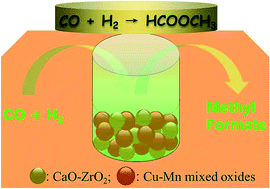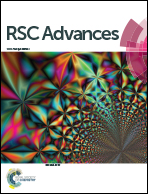A novel Cu–Mn/Ca–Zr catalyst for the synthesis of methyl formate from syngas
Abstract
A novel catalyst comprised of Cu–Mn mixed oxides and CaO–ZrO2 solid base has contributed to a high-performance methyl formate (MF) synthesis from syngas in a slurry reactor. Cu–Mn mixed oxides and mesoporous CaO–ZrO2 solid base were prepared by complexing method and alcohothermal route, respectively, and they were characterized by N2 isotherm adsorption–desorption, XRD, SEM, TEM, XPS and CO2-TPD techniques. Under the optimum reaction conditions of 160 °C, 3 MPa, 3 : 7 for the ratio of methanol to N,N-dimethylformamide, 40 g L−1 Cu–Mn sample, and 30 g L−1 CaO–ZrO2 sample, a low CO conversion of 22.4% was obtained over Cu–Mn/Ca–Zr, whereas the MF selectivity of 82.3% was higher than that of the traditional catalyst (e.g. Cu-catalyst and NaOCH3), which was due to the synergism between Cu–Mn and CaO–ZrO2 samples.


 Please wait while we load your content...
Please wait while we load your content...